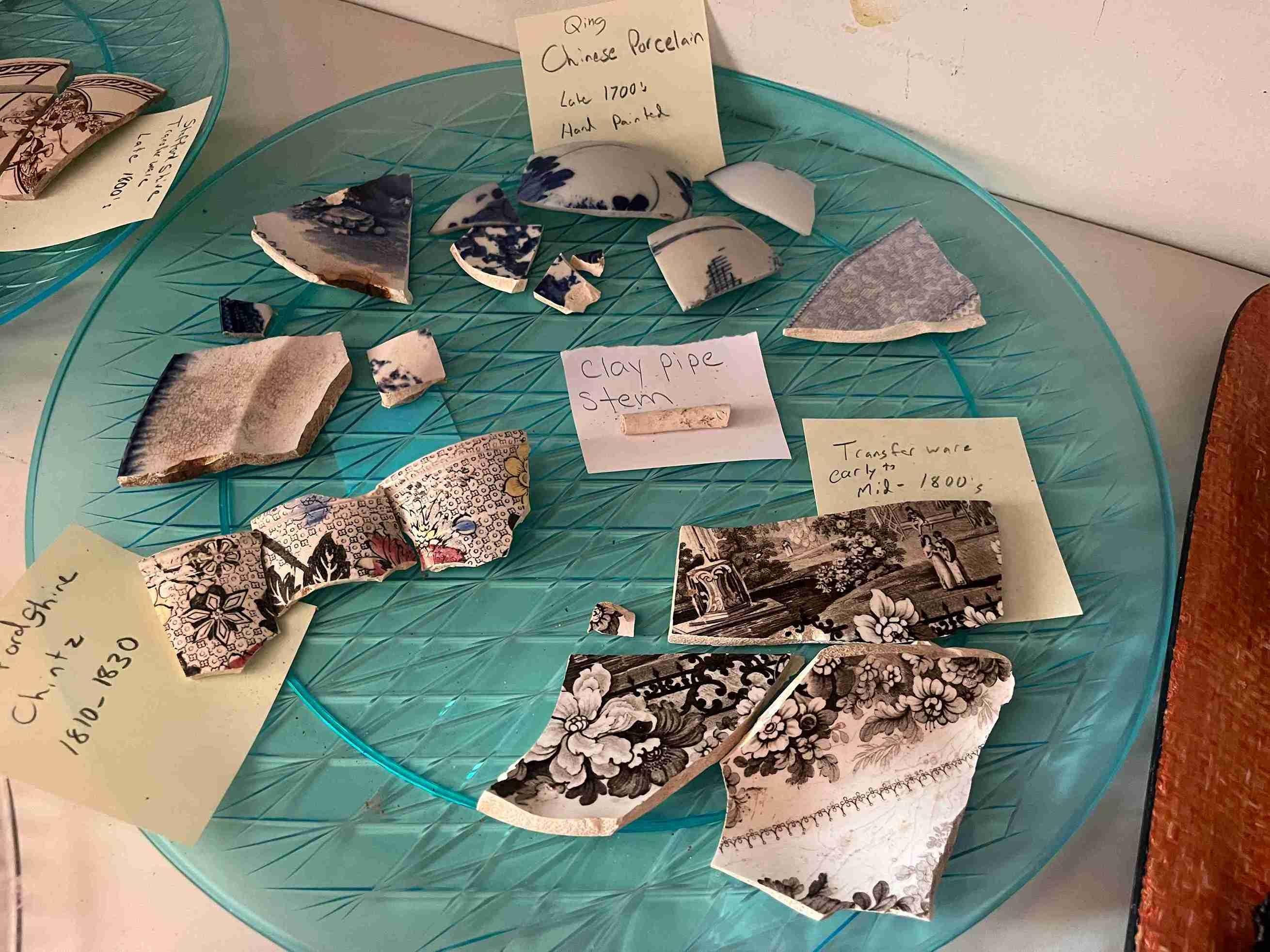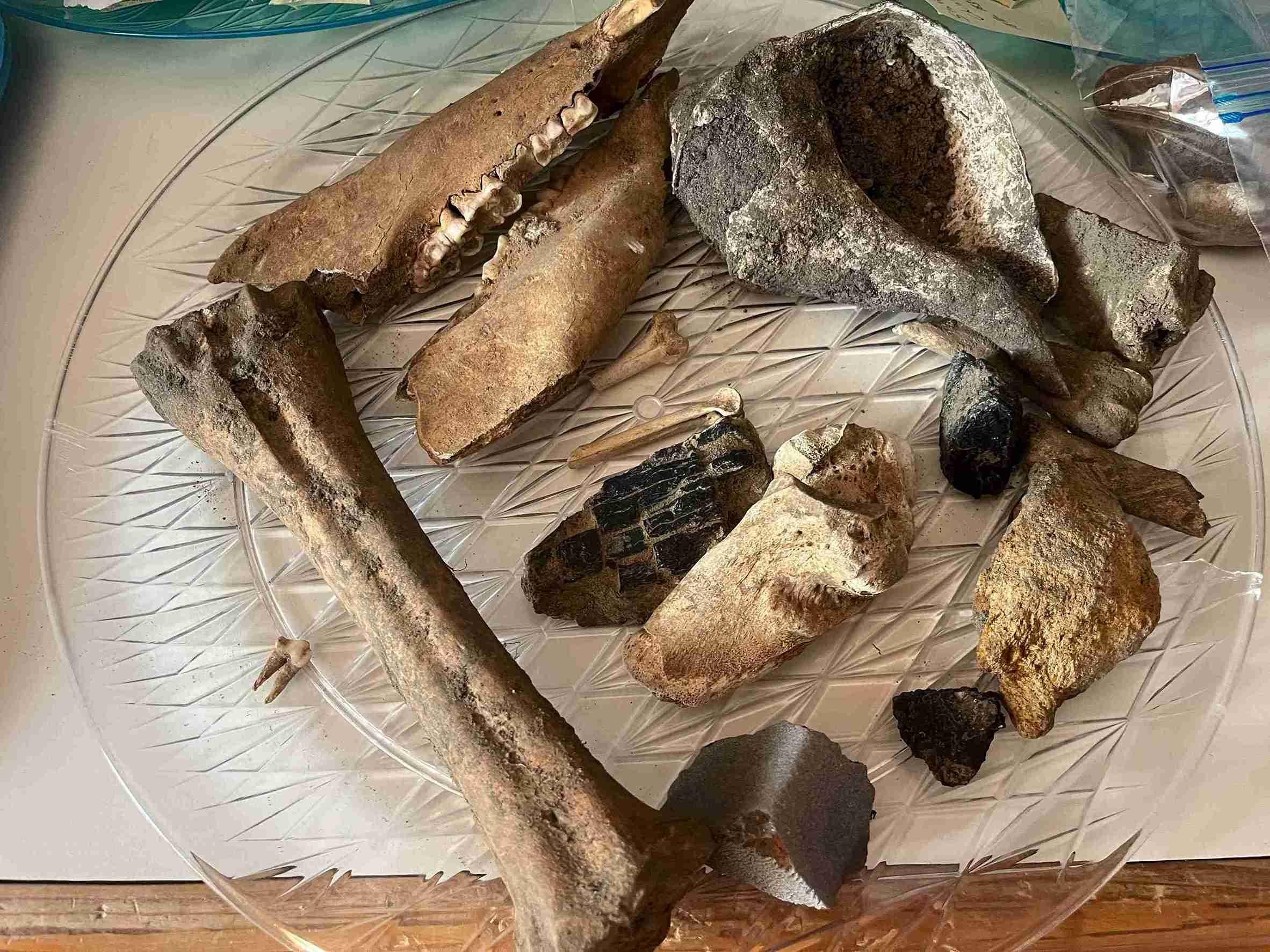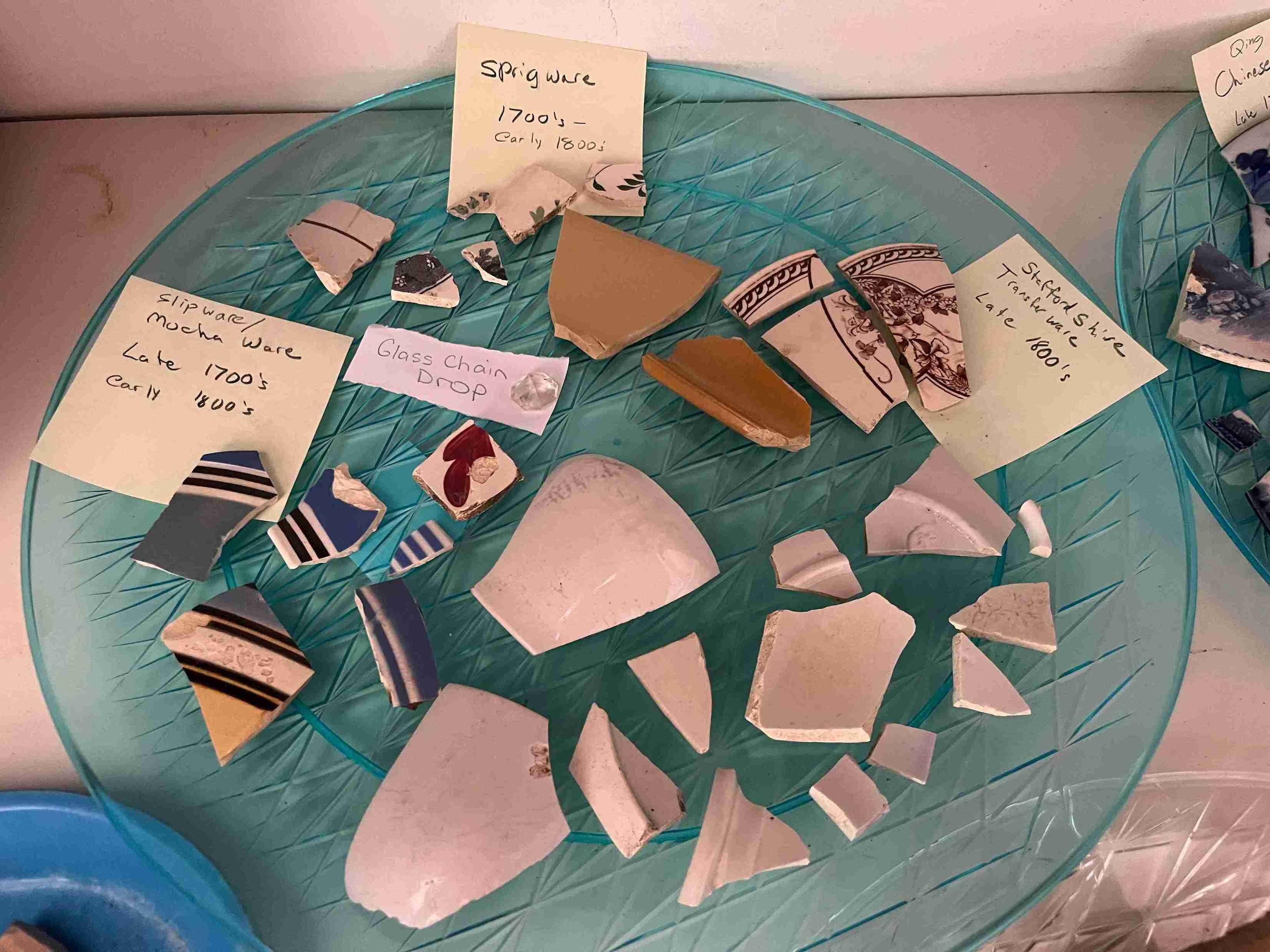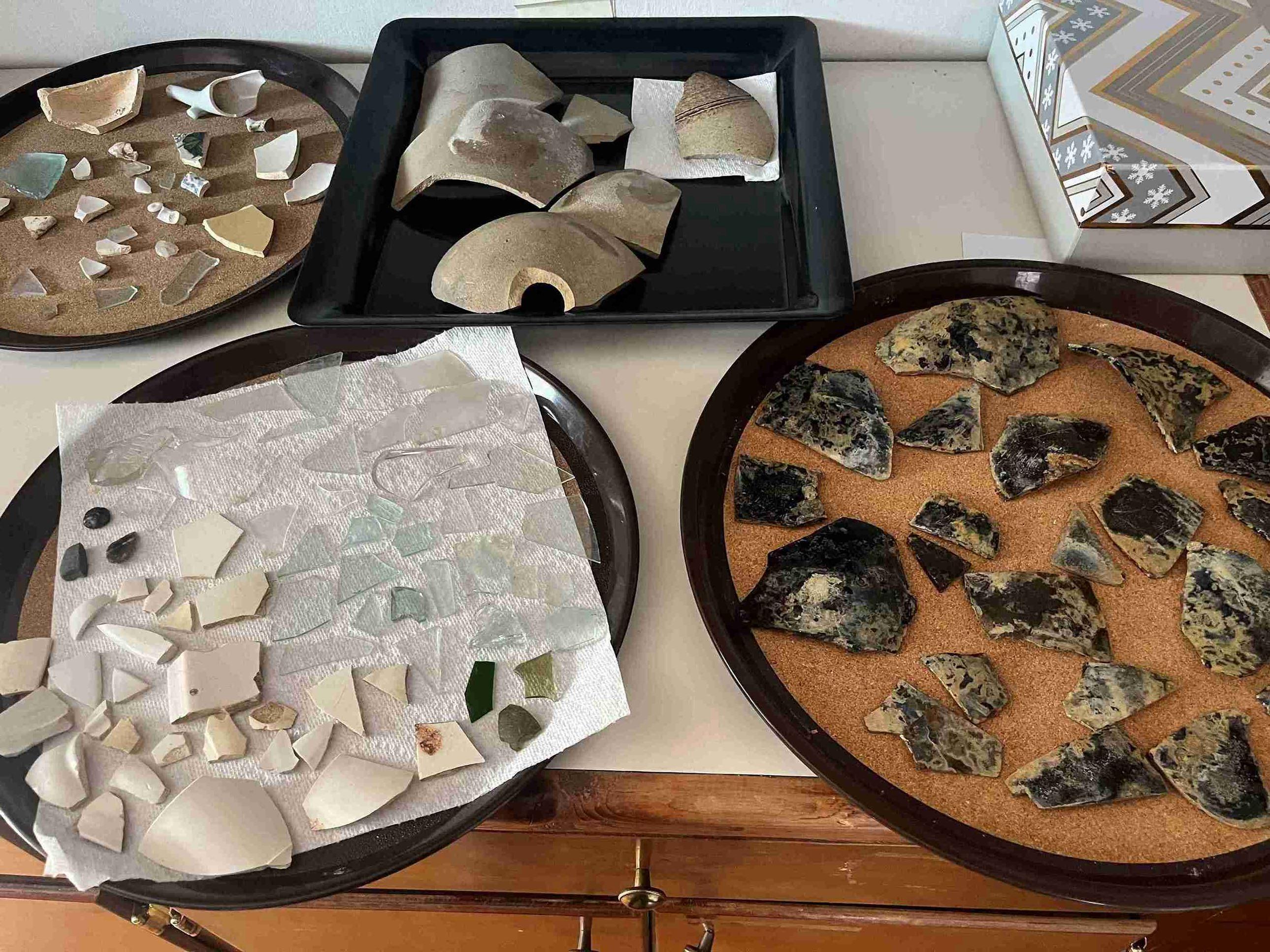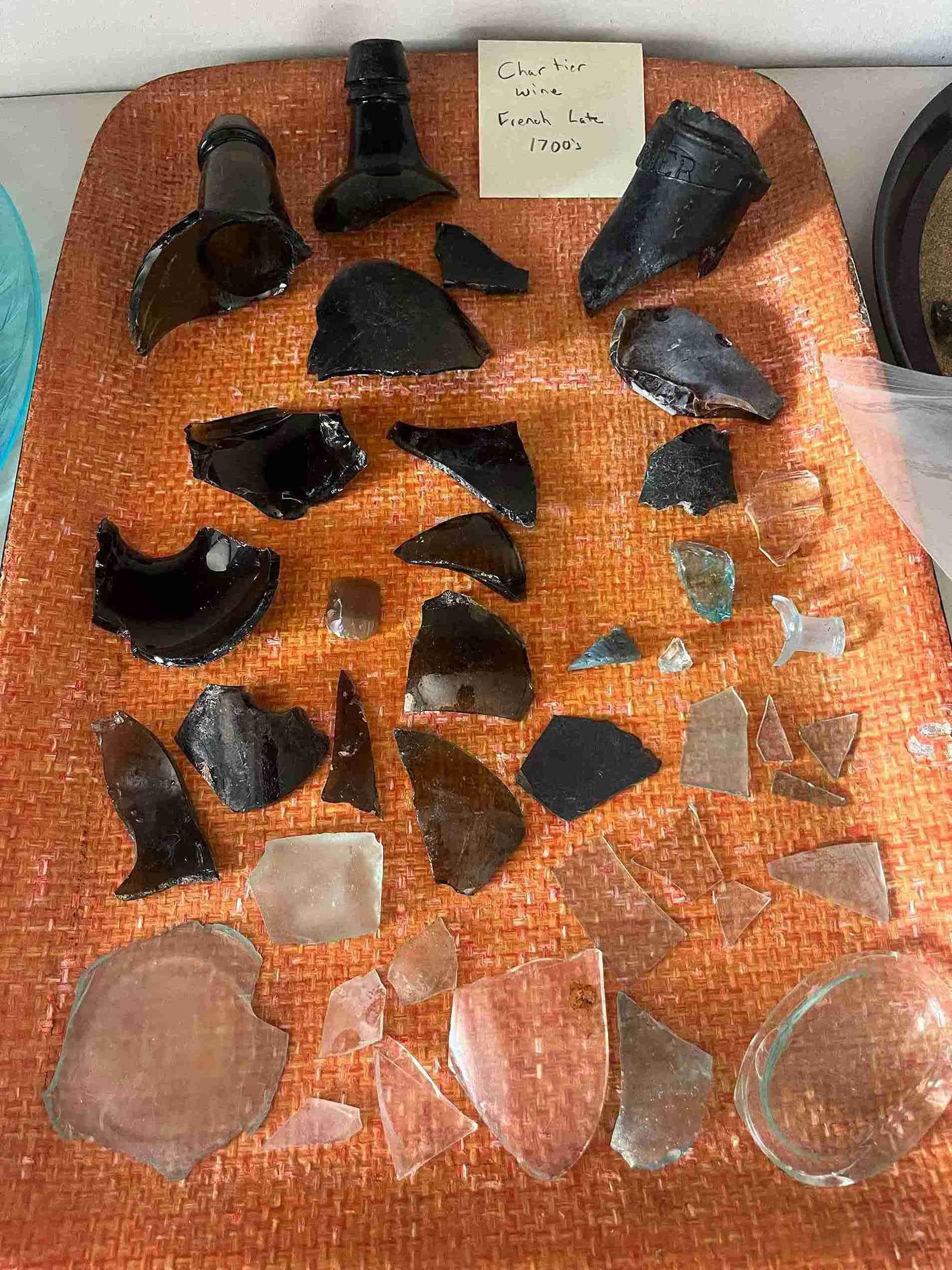Construction Project at NC Church Digs Up the Unexpected
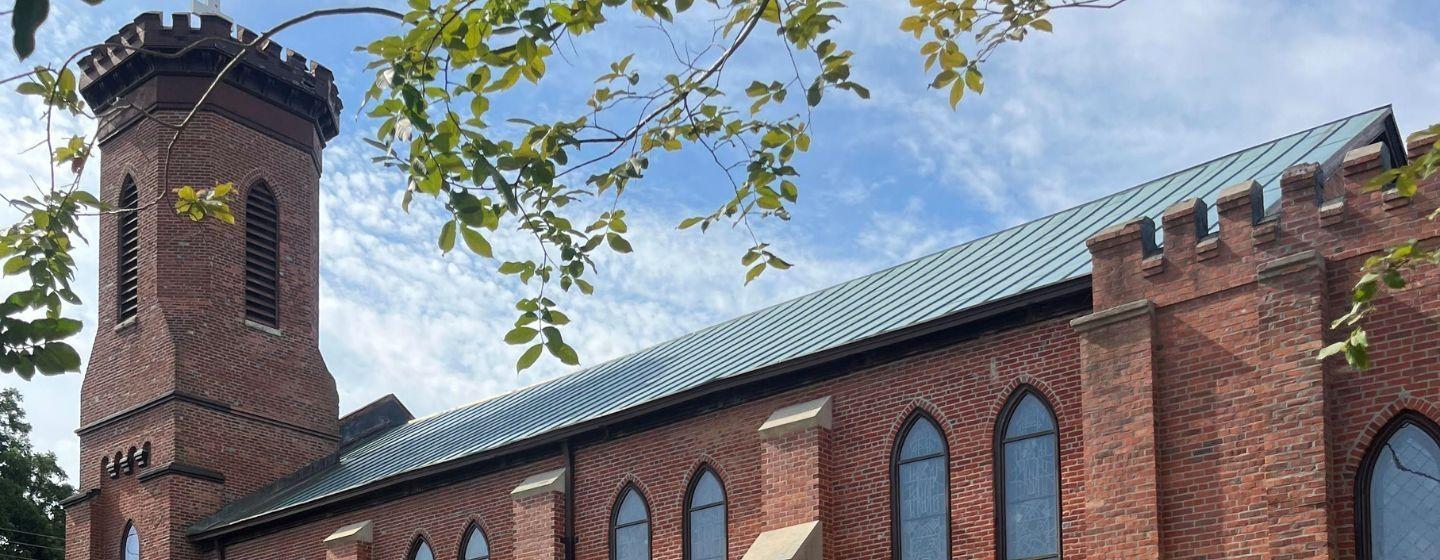

The project seemed straightforward on the surface. Dig up a rotting magnolia tree on the grounds of Christ Episcopal Church in Elizabeth City and make way for a new playground.
Nobody knew what was buried beneath the surface.
But then a backhoe operator hit a line of bricks while removing the tree stump.
Worried that an underground crypt had been struck, the church rector, Rev. Daniel Cenci, asked the contractor to stop so he and several parishioners could investigate. It didn’t take long before the group found fragments of dishes, China and glassware.
Since Cenci and other members of the parish weren’t certain how old their discoveries were, they called the nearby Museum of the Albemarle. Staff there confirmed the items were significant enough and old enough that the church should contact the North Carolina Office of State Archaeology for assistance.
“The chief archaeologist of the state called me and told us to stop digging,” Cenci said. “We think the bricks were part of a cistern or a root cellar associated with an old home that was nearby.”
There’s also the possibility the items were from an old trash pit as cisterns were often used that way. Archaeologists say trash pits are important discoveries because what people throw away can shed light on what was happening in a community long ago.
State archaeologists excavated the site for several days and uncovered many more items. All the artifacts discovered are on plates in the church’s kitchen.
The collection of items includes pieces of glass and pottery, Chinese porcelain, an old French wine bottle and animal bones. They are believed to date from between the early-to-mid 1700s and the mid-1800s.
“The oldest item looks like an old clay jug or pot, and the folks from the museum say it can date as early as 1720,” said Cenci.
That would make it about 100 years older than Christ Episcopal Church’s congregation, which was established in 1825. The current building was completed in 1857.
“Christ Church was formed in 1825 from the Pasquotank Parish, founded in 1701 by the Vestry Act issued by King James ll, and three rural chapels in this county were churches of England,” Cenci explained. “This church has a long history in this county.”
To help learn more about the church’s site, parishioners searched through deeds, wills and estate documents at the county courthouse. They discovered that in the early 1800s a person named George Davis owned the property where the church now sits. The lot is in a prime location in the center of town and near the water.
What’s significant is that Davis was a free Black man.
“We don’t know much about Mr. Davis, but I think it is interesting that an African American man owned property at that time,” said Cenci. “Church records show his daughter Charlotte was married in the parish church in 1833.”
It’s difficult to know whether all the excavated items belonged to Davis, but based on their quality, it appears the owner was a person of means.
“We’ve found bottles of French wine, and we found imported porcelain from China … We have uncovered the history of an early African American in our community that was quite influential [and] quite affluent in the town,” added Cenci.
The playground project is currently on hold. State archaeology officials say it’s up to the church to decide what happens to the site. Whatever happens, Cenci says parishioners are excited and so is he.
Coincidentally, Cenci graduated from the University of Alabama with a double major in religious studies and history. He said one of the reasons he was attracted to Christ Church was its history.
The timing of this find couldn’t be better as the church celebrates its bicentennial anniversary next year.
“As a Christian, I believe it’s God’s providential timing that this would happen right as we are coming into our anniversary year,” said Cenci. “We made this discovery of a home that was in existence when the church was founded, and it could give us a glimpse back in time to things that were being used and what life was like 200 or more years ago.”
